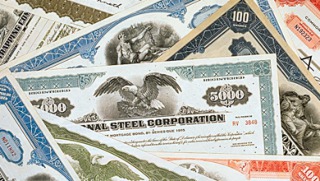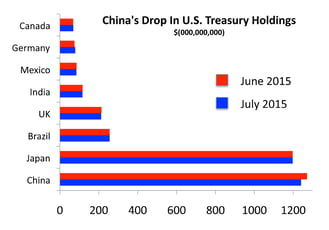Anticipation is building as the Fed nears a decisive move to raise interest rates before year end. Some believe that the Fed may have missed its chance to raise rates, which would have conveyed a sense of confidence about the nation’s economy.
As rates have settled at 50-year lows for sometime now, pension plans are a distinctive few that have not benefited from the low, single-digit rates. This is so because pension funding and growth projections are primarily based on the interest earned. So when rates are low for an extended period of time, growth estimates decline and shortfalls evolve. The concern is that most fiscally strapped municipalities are struggling to meet shortfalls in pensions, thus increasing liabilities and hindering cash reserves.
Credit spreads continued to widen between U.S. government bonds and corporate high-yi eld bonds, somewhat of an indicator of the credit market’s health. Questionable corporate earnings tend to pull corporate bonds down, feeding into higher stock volatility and price uncertainty.
eld bonds, somewhat of an indicator of the credit market’s health. Questionable corporate earnings tend to pull corporate bonds down, feeding into higher stock volatility and price uncertainty.
Various fixed income analysts are closely following the $1.5 trillion of corporate bonds maturing in 2016 & 2017, representing nearly 20% of the entire $7.8 trillion corporate bond market. Questions arise as to how capable companies will be to pay that debt off, and where will rates be should additional debt be needed to fund maturing bonds.
If the Fed raises rates before year end, the riskier bonds (junk bonds), which have had the highest yields in the past few years, their yields will push higher and prices will fall. Investors should monitor how much they have in riskier paper; they may want to reduce their exposure some in the coming months.
Another area of bond risk is the global high-yield bonds from emerging markets. These have become popular as their yields have been much better than the treasuries. However if rates begin to rise, it is likely they will rise too, as they are in constant competition for investment money. This is one reason why a well-diversified portfolio is helpful. It will limit exposure in any one area and should provide proper cross correlation of investments.
Alternative investments can be a terrific option to add to an income based portfolio, some providing yields of as much as 7.5% or more, with relatively low risk. Because they are hard/real asset backed, the price should not change when rates move. Alternative investments can be a part of well diversified portfolio and provide a base that is typically not subject to market volatility.
Sources: Bloomberg, Moody’s, Reuters, Market Watch
To Remember
"God gets to judge; I get to serve." - personal motto of Dell Loy Hansen






